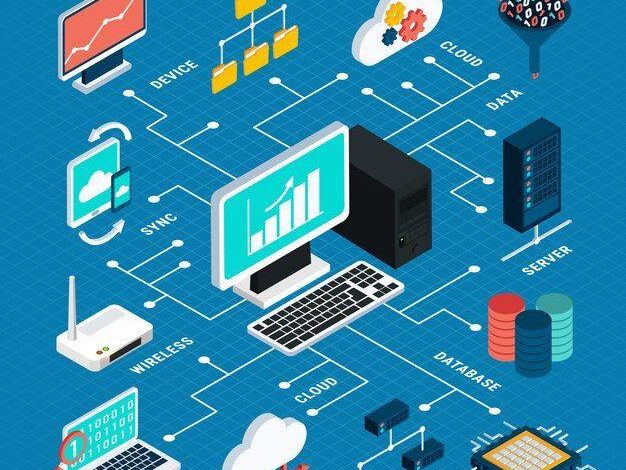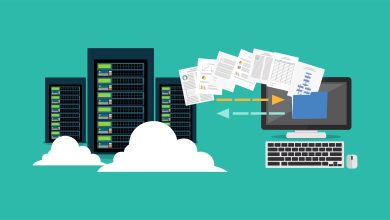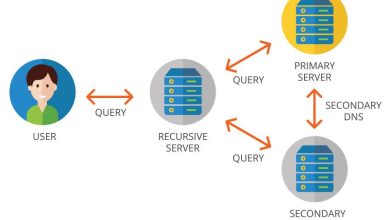An Introduction to Computer Networks

“`html
body {
font-family: arial,sans-serif;
line-height: 1.6;
margin: 0;
padding: 0;
background: #f4f4f4;
color: #333;
}
.container {
width: 80%;
margin: auto;
overflow: hidden;
padding: 20px 0;
}
h1, h2, h3 {
color: #333;
}
h1 {
text-align: center;
}
p {
margin: 15px 0;
}
ul, ol {
margin: 15px 0;
}
ul li, ol li{
margin-bottom: 10px;
}
a {
color: #0077cc;
text-decoration: none;
}
a:hover {
text-decoration: underline;
}
.wp-block-table {
margin: 20px 0;
border-collapse: collapse;
width: 100%;
}
.wp-block-table th, .wp-block-table td {
border: 1px solid #ddd;
padding: 8px;
text-align: left;
}
.wp-block-table th {
background-color: #f0f0f0;
}
.highlight {
background-color: #ffffcc;
padding: 10px;
border-radius: 5px;
margin: 15px 0;
}
.section-intro{
font-size: 18px;
}
An Introduction to Computer networks: Connecting the Digital World
In our increasingly digital world, computer networks have become the backbone of communication, information sharing, and resource access. Essentially, a computer network is a system of interconnected devices, such as computers, servers, smartphones, and other peripherals, that can communicate with each other and share resources. From the internet that connects billions of devices globally, to smaller local networks within homes or businesses, understanding the concept of networks is crucial in today’s technology-driven society.
What is a Computer Network?
A computer network is a collection of computers and other hardware components interconnected by communication channels that allow sharing of resources and information. These interconnected devices use a common set of communication rules called protocols to transfer data. At its simplest, a network can consist of just two computers connected by a cable, while at its most complex, it can be a global system of interconnected networks like the Internet.
Types of Computer Networks
Computer networks can be categorized based on their size,geographical coverage,and organizational structure. Here are the most common types:
- Local Area Network (LAN): A network confined to a small area like a home, office, or group of buildings. Devices in a LAN are typically connected using Ethernet cables or Wi-Fi.
- Wide Area Network (WAN): A network that spans a large geographical area, connecting multiple LANs. The Internet is the largest WAN, connecting billions of devices worldwide.
- Metropolitan Area Network (MAN): A network that covers a larger area than a LAN but smaller than a WAN, typically a city or a large campus.
- personal Area Network (PAN): A network organized around an individual, usually within a range of 10 meters. Examples include connections between a smartphone and a Bluetooth headset.
- Wireless Local Area Network (WLAN): A type of LAN that uses radio waves instead of wires to connect devices. Wi-Fi is the most common form of WLAN technology.
Key Components of a Computer Network
A computer network is made up of several essential components, both hardware and software, working together to enable communication and data transfer:
- Nodes: any device connected to the network, such as computers, printers, and servers. These can be identified through their IP Addresses.
- transmission Media: The physical or wireless channels through which data is sent, such as coaxial cables, fiber-optic cables, or radio waves.
- Network Interface Card (NIC): A hardware component that provides a network interface for a computer or device to connect to the network.
- Hubs, Switches, and Routers: These devices manage and direct the flow of data within the network:
- Hubs: Simple devices that broadcast data to all connected devices.
- Switches: More intelligent devices that direct data only to the intended recipient.
- Routers: Devices that connect different networks and determine the best path for data to travel.
- modems: Devices that modulate and demodulate signals to convert digital data to analog signals for transmission over telephone lines and vice versa.
- Server: A computer that provides functionality for other programs or devices on the network.
- Client: A computer or device that accesses the services from the server.
- Firewall: A hardware or software wall that permits, denies, or proxies data traffic. It limits unauthorized access to private networks.
Network topologies: Structuring the Connections
Network topology refers to the arrangement of the various elements of a computer network. The choice of topology can affect the network’s performance, reliability, and scalability. Common topologies include:
- Bus Topology: All devices are connected to a single central cable (bus). Easy to set up but prone to failure if the main cable breaks.
- Star Topology: All devices are connected to a central hub or switch. If one device fails, the rest of the network remains functional. More reliable but requires more cabling.
- Ring Topology: Devices are connected in a loop. Data travels in one direction. Failure of one device can affect the entire network.
- Mesh Topology: Every device is connected to every other device. Highly reliable but complex and expensive to set up. There are two types of mesh topology, full mesh or partial mesh.
- Tree Topology: A combination of bus and star topologies. Devices are organized in a hierarchical structure. Offers scalability but can be complex to manage.
- Hybrid Topology: The combination of two or more topologies to create a more complex or efficient layout.
| Topology | Advantages | Disadvantages |
|---|---|---|
| Bus | Simple,low cost | Single point of failure |
| Star | Easy to manage,reliable | Higher cost,hub dependency |
| Ring | Organized data flow | Single point of failure |
| Mesh | Highly reliable,robust | Complex,expensive |
Network Protocols: The Language of Networks
Network protocols are sets of rules and standards that define how devices communicate over a network. They ensure that data is transmitted and received correctly, nonetheless of the underlying hardware or software.Key protocols include:
- TCP/IP (Transmission Control Protocol/Internet Protocol): The foundation of the Internet. TCP manages the delivery of data,while IP handles addressing and routing.
- HTTP (Hypertext Transfer Protocol): Used for transferring web pages and other content on the World Wide web.
- HTTPS (Hypertext Transfer Protocol Secure): An encrypted version of HTTP that provides secure communication over the internet.
- FTP (File Transfer Protocol): Used for transferring files between computers on a network.
- SMTP




